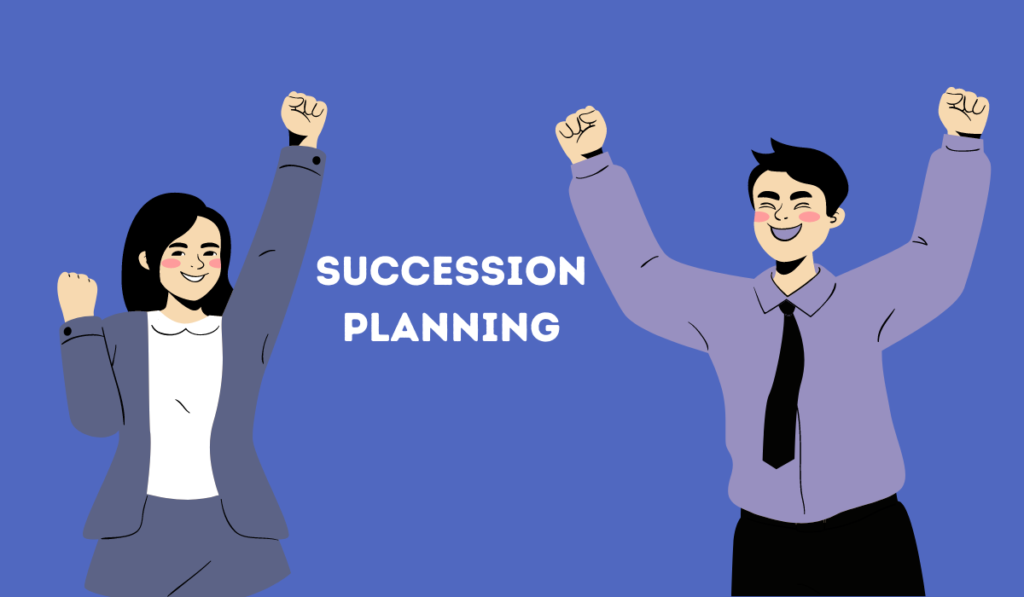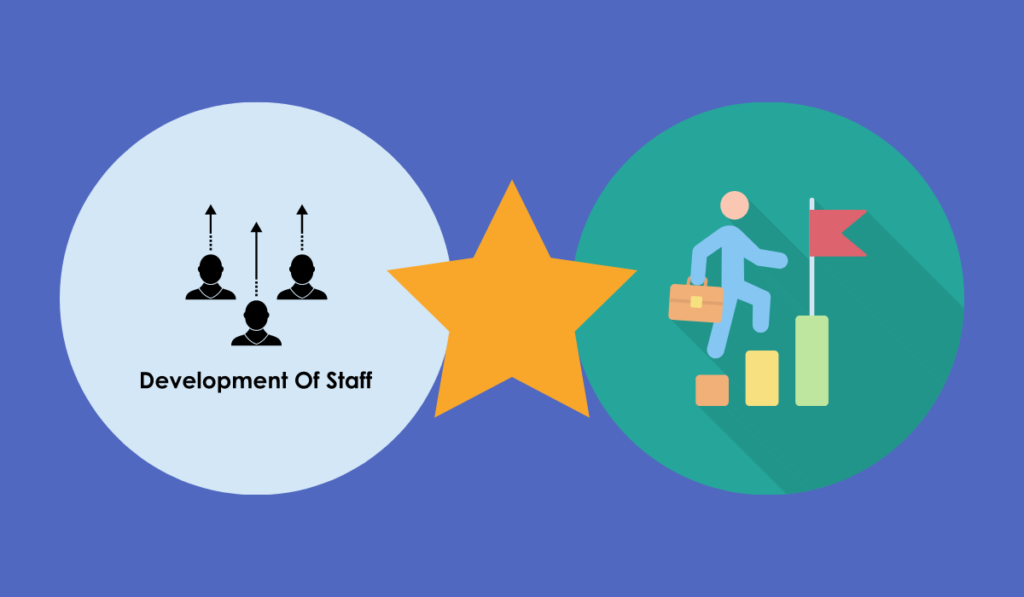

Succession planning can be essential for businesses that want to ensure continuity in critical tasks, even if key employees leave. However, succession planning can be difficult, and many businesses struggle to create a succession plan that works well for them.
One reason for this is that businesses may not be aware of the skills that are in short supply. According to SHRM’s report, “The Global Skills Shortage,”, 75% of businesses that are struggling to fill job openings say there is a shortage of skills in candidates.
This indicates that businesses need to be proactive about succession planning, and identify the skills that are in short supply so they can create a succession plan that addresses these shortages.
What is succession planning?
…the top three factors employees cited as reasons for quitting were that they didn’t feel valued by their organizations (54 percent) or their managers (52 percent) or because they didn’t feel a sense of belonging at work (51 percent).”
McKinsey & Company, Quarterly Report, Sep 2021.
Succession planning is the process of ensuring that an organization can replace key personnel in the event of their departure.
It includes developing a pool of potential candidates, assessing their skills and qualifications, and grooming them for future leadership positions.
The plan is vital for any organization, but it is especially crucial for businesses that depend on a few key individuals.
Why is succession planning important?
A succession plan is critical for any organization. If key employees leave unexpectedly, the organization will be left scrambling to fill the void.
It is essential to prepare for possible leadership changes in case of a death, retirement, or resignation. Succession planning helps ensure that the business is ready for such an event.
It also allows businesses to groom potential leaders and ensure that they are ready to take on leadership succession when the time comes.
There are several reasons why succession planning is essential:
- Ensures continuity of operations in a departure; if someone leaves, the company can still have the function.
- Allows businesses to groom future leaders and enable companies to train future leaders.
- Ensures that critical knowledge and skills are not lost when key personnel leaves. Losing key personnel can mean losing necessary knowledge and skills. Losing a key employee can be bad for a company or organization. That’s why it’s crucial to have a plan in place so that this doesn’t happen.
- It minimizes disruptions during transitions.
How can succession plans be challenging to create and implement?

It’s challenging to create and implement succession or replacement planning because it’s hard to find qualified candidates to fill the position. In addition, the transition process can be difficult for employees who are leaving the company.
One way to overcome these challenges is to create a succession planning process that includes both internal and external candidates. The plan gives you a pool of qualified candidates to choose from and helps ensure that the transition process is smooth for all involved.
When creating a succession plan, it’s important to consider the following:
- The skills and experience required for the position
- The company’s succession planning goals
- The timeline for implementing the succession plan
The skills and knowledge needed for the position
When you try to fill a position, the skills and knowledge will vary depending on the position. For example, a CEO succession plan will require different skills and experience than a succession plan for a sales manager.
The company’s succession planning goals will also play a role in determining the skills and experience required for the position. For example, if the goal is to promote from within, then you’ll need to consider the career development needs of promising employees who are being considered for promotion.
The timeline for implementing the succession plan should be determined based on the company’s succession planning goals. In most cases, it’s best to start with a shorter timeline and then extend it as needed. This allows you to change the succession plan as needed and gives you flexibility if unexpected circumstances arise.
The skills and experience required for the position include:
- The ability to manage people
- The ability to work with a team
- Strong leadership skills
- The ability to make decisions
- The ability to negotiate
The Company’s succession planning goals
When creating a succession plan, one important goal is how the transition will affect the business. Some of the most common goals include:
- Ensure that the next generation has the important knowledge and skills they need.
- Maintaining continuity of operations
- Preparing for unexpected events
The timeline for implementing the succession plan
You need to create a plan that will work and that you can do quickly. Succession plan means considering the time it will take to find qualified candidates, train them, and implement the succession plan. Depending on the company’s succession planning goals, the timeline for implementing the succession plan can range from a few months to several years.
When creating a succession plan, it’s essential to consider the skills and experience required for the position, its succession planning goals, and the timeline for implementing the succession plan. By doing this, you can create a succession plan that is realistic and meets the needs of your company.
Get more out of your business
Get the best employee engagement content every week via mailing list
Develop Employees for Succession Planning

Succession planning is creating a plan for the orderly transfer of important business tasks and responsibilities from one employee to another if an individual is no longer able to perform their duties.
It is important for every organization to have a succession plan in place, as no one is immune to unexpected absences, whether due to illness, accident, or retirement.
When developing employees for their career development, it is important to consider both the short-term and long-term needs of the organization.
Succession planning should not be viewed as a “last resort” measure, but rather as an ongoing process that involves identifying and developing potential successors for key roles within the company.
There are several ways to identify and develop internal candidates for key roles within your company:
Identify high potential employees.
High potential successors are those who can be promoted to senior positions within the company. They may not be the most experienced or qualified candidates, but they demonstrate the essential qualities and skills for success in more senior roles.
Promote from internal employees.
When succession planning, it is important to consider promoting current promising employees into higher-level roles. This allows you to groom internal employees for succession and ensures that they are familiar with the company’s culture and values.
Encourage employee development.
Employees should be encouraged to develop their skills and knowledge through training and education opportunities. This will help them grow into their role and increase their readiness for succession.
Promote diversity and inclusion.
A diverse and inclusive workforce is key to succession planning. When it comes to succession planning, there are many things to consider, including gender, ethnicity, age, and professional experience. This will help ensure that the organization has a bench of qualified candidates who can step into critical roles when needed.
Developing employees for succession planning is essential for any organization’s overall risk management strategy. By taking the time to identify and develop potential successors, you can minimize the impact of unexpected absences and maintain business continuity in the event of an emergency.
Understanding Succession Planning
Succession planning is the process of developing employees for future roles in the company. This can include identifying potential successors and training them for their new roles. It’s important to have a succession plan in place in case of unexpected departures or layoffs.
Succession planning can be a challenge, but it’s important to think about your company’s long-term needs. You may need to make tough decisions about whom to promote and who to let go, but succession planning is essential for the future of your business.
If you’re not sure where to start the succession planning process, here are a few tips:
- Start by identifying your company’s key roles: These are the roles that are critical to the success of your business.
- Identify the employees who have the potential to fill those roles. This can be based on skills, experience, and aptitude.
- Start training the potential for their new roles. This can include job shadowing, mentorship programs, and formal training courses.
- Keep an open dialogue with your employees about succession planning. They should understand your goals and be aware of their role in succession planning.
Benefits of succession planning.
Succession planning is vital for several reasons, like:
Ensures that the organization will have a qualified successor.
The first and most obvious benefit of succession planning is ensuring that the organization will have a qualified successor. It helps to ensure continuity of operations if a key employee leaves the organization.
Help to identify and develop high-potential employees.
The second benefit of succession planning is that it can help identify and develop high-potential employees. By identifying and nurturing future leaders, the organization can ensure that it has the bench strength necessary to maintain its competitive edge.
Employees roadmap.
Succession planning also provides a roadmap for employees. It gives them clarity about their career path and helps them plan for their future. The program can be beneficial for younger employees who are looking to progress in their careers.
Risk management.
Finally, succession planning helps organizations manage risk. If an unexpected event occurs and key personnel is no longer available, succession planning ensures a backup plan is in place.
Help to improve employee morale and motivation.
When employees know that there is a succession plan, they feel more valued by the organization.
Succession Planning and Diversity
Succession planning helps to ensure that the organization remains competitive by preparing employees for future roles.
Diversity is an important consideration in succession planning. Organizations that embrace diversity are more likely to have a larger pool of qualified candidates when it comes time to fill a position. This is because diversity encompasses various characteristics, including race, gender, religion, and sexual orientation.
Organizations that value diversity is more likely to experience growth and success. By embracing diversity, organizations can tap into new markets and create products and services that appeal to a broader audience.
Succession Planning Process for Emerging Leaders.
In order for an organization to be successful in the long term, it is important to develop emerging leaders. Emerging leaders are individuals who have the potential to become future leaders within the organization.
There are several ways to develop emerging leaders, including:
- Providing mentorship opportunities
- Encouraging employees to participate in professional development activities
- Giving employees the opportunity to lead projects or teams
- Allowing employees to senior shadow leaders
Mentorship is a key component of succession planning. By pairing experienced employees with less experienced ones, organizations can provide the guidance and support emerging leaders need to reach their full potential.
Professional development activities help to prepare employees for future roles by teaching them new skills and knowledge. These activities can include attending conferences, taking courses, or participating in training programs.
Giving employees the opportunity to lead projects or teams is another way to develop their skills and knowledge. This experience helps them learn how to manage a project and work with others effectively.
Shadowing senior leaders allow employees to see how leaders operate and make decisions. This experience can help them develop their leadership style.
Tips for overcoming challenges with succession plans.
Succession planning can be complex when employees do not want to move up the ladder or lack qualified candidates. However, by following these tips, you can overcome these challenges and create a succession plan that works for your business:
Communicate the succession plan with all employees.
Communication is key when creating a succession plan. Ensure all employees are aware of the program and why it is crucial.
When it comes to succession planning, having a human capital strategy in place will help ensure that your business has a solid foundation for future growth. It’s also important to remember that succession plans should be flexible, things may change, and the program should adapt.
Create a development program for employees.
One way to create a human capital strategy is to develop a development program for employees. This program will help employees learn new skills and grow their careers. By providing employees with growth opportunities, you are helping to ensure that they are ready for succession planning.
Evaluate employees regularly.
One of the most important aspects of succession planning is regularly evaluating employees.
Evaluation allows you to identify employees who may be potential successors and enable you to identify any areas in which employees need development. Evaluating employees regularly also allows you to keep track of employee progress and ensure that they meet your expectations.
Plan for unexpected events.
One of the most important aspects of succession planning is being prepared for unexpected events. This means having a plan in place for what will happen if something happens to you and you are not able to run your business anymore.
This could include things like a key employee quitting unexpectedly, a natural disaster that devastates your organization, or even a pandemic. Having a plan for these events will help ensure that your business doesn’t suffer any major setbacks.
One way to prepare for unexpected events is to have a list of backup employees ready to take on key roles within your company.
You should also have a plan for how you’ll continue to operate if key members of your team are unable to work. By planning ahead, you’ll minimize the impact that unexpected events can have on your business.
Identify the rock stars.
When you have selected the key position, you must find the successors for each critical function. This requires that you examine employee performance objectively and eliminate any personal attachments.
Most times, employees with an extrovert attitude receive a promotion. Often, your strongest performers are not so obvious. It also helps evaluate individual strengths and emotions. Recruiting high-potential employees is a lifelong learning experience that is socially conscious and conscious.
Frequently Ask Questions (FAQ)
How important is succession planning in an organization?
Succession planning is crucial in any organization. The goal of succession planning is to establish the function, responsibilities, titles, and/or positions of each individual in an organization who has been assigned the role of “successor.”
Understanding all elements of the business, including future possibilities and risks, is a must for successful succession planning. It prevents unseen consequences by establishing goals for succession steps well before they are needed.
The program identifies individuals to prepare for transitions during an emergency or routine personnel changes.
Succession planning helps the organization create a smooth transition with qualified successors appointed to critical roles. Using a succession plan is a way to make sure that your company always has someone in key positions, so important work does not come to a stop.
Succession planning and Career Goals.
An effective succession plan gives employees clarity about their career path and growth opportunities, absolutely it will motivate them. Employees who feel they have a future at the company are more likely to stay, even during difficult times.
A succession plan also helps managers identify potential successors for key roles and develop them into leaders. When managers can groom employees for leadership positions, it saves time and money in recruiting and training costs.
Developing a succession plan is easy, but it takes time and effort. The first step is to inventory your current staff and identify which positions are most critical to your organization’s success.
Once you have identified the key positions, you need to assess the skills and experience of your current employees. From there, you can begin to develop a succession plan.
One of the most important things to remember when developing a succession plan is that it should be flexible. The plan should adapt as your organization changes and grows.
It’s also important to keep your succession plan up-to-date. Regular reviews will ensure that the plan remains relevant and accurate.
What are the five levels of succession planning?
The five levels of succession planning are as follows:
- Identification: This is the first step in succession planning and involves identifying potential successors for key roles within the organization.
- Development: Developing potential successors is essential. You need to make sure that they are ready to take on the role if needed.
- Assessment: Successors must be evaluated once they have seen if they are qualified for the position.
- Transition: If a successor is ready for the role, they will transition into the role with a smooth transition.
- Retention: The ultimate goal of succession planning is to retain key employee.
Conclusion
Succession planning is a vital process that all organizations should consider in order to maintain success. By having a succession plan in place, you can identify potential successors for key roles and develop them into leaders.
This helps retain talent within your company and lessens employee turnover. It’s important to keep succession plans up-to-date by conducting regular reviews, so put this on your agenda!


